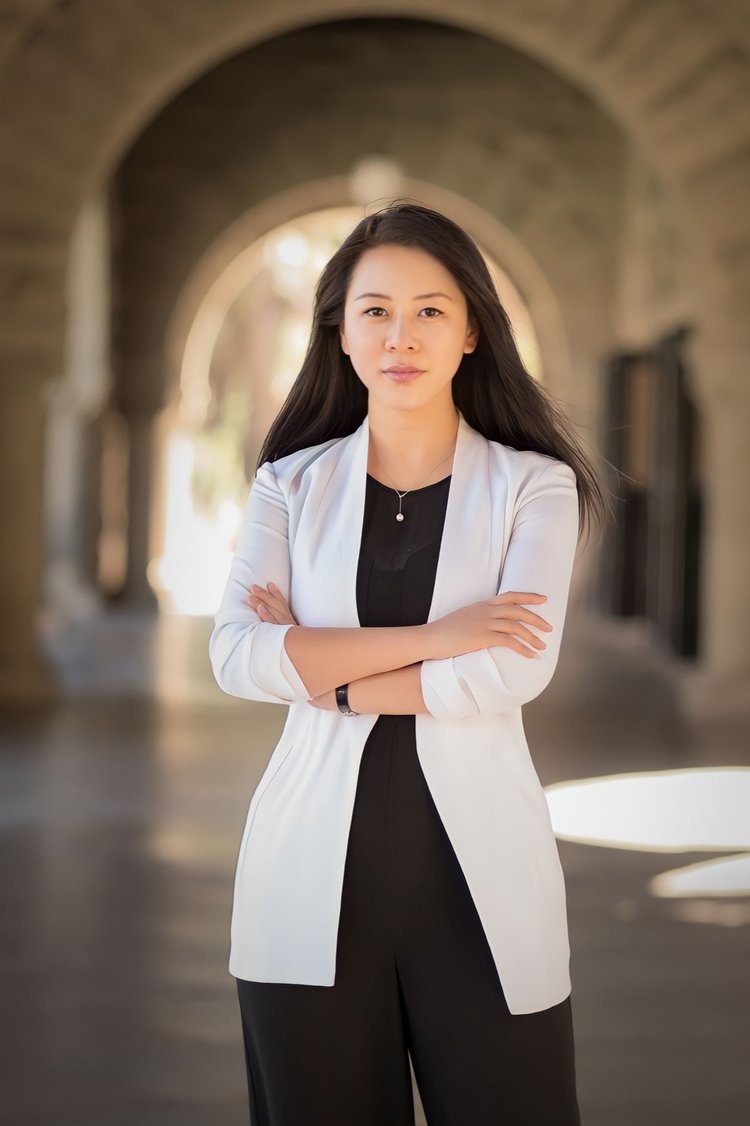Silicon Valley angel investor rides high on the AI boom, seeing the best of times for startups in critical industries amid a chaotic investment landscape, writes Luo Weiteng in Hong Kong.

This March, a diverse cohort of global investors at the Milken Institute Global Investors’ Symposium in Hong Kong joined the chorus of optimism that “Hong Kong is staging a comeback”.
The inspirational sentiment is evidenced by the once little-known Chinese artificial intelligence startup DeepSeek, whose meteoric rise has triggered a fundamental rethink and reassessment over the attractiveness of Chinese mainland and Hong Kong markets, with global investors giving the city a vote of confidence and jumping on the AI-led stock rally bandwagon.
The level of excitement on DeepSeek-driven momentum was also shared by Silicon Valley venture capitalist Zhang Lu at the gathering. Over recent months, Zhang has seen more and more entrepreneurs jumping at the opportunity to launch their startup projects.
The sheer power of the newfound tech prowess is now beyond doubt. But 10 years ago, when Zhang, founder and managing partner of Fusion Fund, established her venture capital firm to target early-stage startups dedicated to business-to-business (B2B) innovation — particularly in AI, healthcare and deep-tech sectors — it was considered a highly unorthodox move.
READ MORE: Racing for intelligence
In the traditionally male-dominated venture capital industry, Zhang is unafraid of being a contrarian voice and challenging the prevailing wisdom. Indeed, beyond a set of labels — being a minority, an immigrant and a young woman — Zhang has established her calling card as a Stanford graduate and technologist, a Silicon Valley-based investor and a serial entrepreneur.
Fusion Fund announced in March it had closed its fourth early-stage flagship fund with $190 million of committed capital in an oversubscribed round backed by institutional limited partners.
Getting such a large injection of funds against an increasingly bifurcated venture capital landscape is no easy feat. The trend of “it’s good to be big” comes with a tale of contrasting fortunes that dominate every nook and corner of the market.
Up to 30 entrenched venture capital firms scooped up 75 percent of all venture capital raised in the United States last year, with $35 billion, half of the total, having gone into the coffers of nine of them, according to the Washington DC-based National Venture Capital Association and research house PitchBook. Venture mega-fund Andreessen Horowitz alone raked in over 11 percent of the money raised.
Zhang thought it would have taken the fourth fund nine to 12 months to secure its initial funding goal of $150 million. But within half a year, Fund IV had racked up nearly $250 million in subscription commitments.
Such investor zest did not come out of thin air. It points to the hard work ethic that has led Zhang all the way. Fourteen years ago, she founded a medical device company specializing in noninvasive technology for early diagnosis of type 2 diabetes — while doing her graduate degree in materials science and engineering at Stanford University. The entrepreneurship experience helped Zhang establish herself in the realm of venture capital.
Born and bred in China’s northern Inner Mongolia autonomous region, Zhang never fails to be impressed by the zestful role of ethnic Chinese in Silicon Valley, who are riding high on the AI boom.
As next-generation technology and AI solutions have been very much on everyone’s lips, Zhang has built up her portfolio at a steady pace with great patience. Over the past decade, Fusion Fund has backed 90-plus pioneering projects, with average annual investments hovering between seven and 10. So far this year, it has deployed capital to three startups.

AI pioneers
Fusion Fund, which currently manages more than $500 billion in assets, has turbocharged the rise of many AI pioneers, including cloud-based machine learning platform Paperspace, AI software company Otter.ai, medical imaging software company Subtle Medical, AI-powered search engine You.com, and Optimal Dynamics — an AI-enabled analytics platform for the logistics sector.
It has also had 10 portfolio companies exit, including Voyage AI, which focuses on building embedding and re-ranking models, technical tools that help AI retrieve the right information. It was sold for $220 million earlier this year.
According to Zhang, the general decision-making cycle for each investment project lasts one to two months. The investment cycle to reap what they have sown normally takes a decade, provided that no merger and acquisition opportunity emerges.
Just as venture capital titans are flexing their muscle to dictate rules and valuations and squeeze boutique firms, such divergence and concentration tell a tale of two types of startups — the most promising ones bringing in the cash, and the rest fighting for scraps.
Despite a sluggish world venture capital scene in recent years, there is always a place for fresh AI startups to feast on mega-rounds of investment. The first three months of 2025 were significantly buoyed by a single investment round, with OpenAI raising $40 million — a record amount for a private technology firm.
The OpenAI deal alone accounted for more than half of all US venture funding and one-third of worldwide funding in the first quarter of this year, according to Crunchbase data. It tells a bigger picture, with AI-related companies winning the lion’s share of US venture funding — 71 percent of the first quarter’s total value and nearly half with the OpenAI transaction excluded, according to PitchBook.
Indeed, the tone of the ongoing US tech earnings season sends a clear message — AI spending is the only certainty in Silicon Valley in an uncertain time.
Although fears of a bubble brewing in AI cry out for a rethink, reassessment and reckoning, Zhang says AI adoption is still nascent, with the best of it and the real revolution yet to come.
She sees the next AI story unfolding “across the board” and is betting big on vertical AI design to be more specialized and tailored to specific industries.
Vertical vision
While the early days of AI were dominated by a “horizontal” strategy, with tech giants like Google, Amazon, IBM and Microsoft creating broad AI solutions for various tasks, Zhang has seen vertical AI go beyond serving the tech-centric community to make its presence felt in sectors that were once seen to lack deep tech attributes — finance, insurance, logistics, supply chain management and healthcare.
“The sheer power of AI manifests itself as a catalyst, accelerating the digital transformation and technological innovation of industries across the board,” she says, tinged with optimism about the meaningful impact of AI-native vertical applications on healthcare, finance, the logistics supply chain and space technology.
AI infrastructure, she says, aims to address four critical barriers to AI innovation and adoption — power consumption, computing costs, latency issues and data privacy risks. It also offers potentially huge opportunities for those with the foresight to jump on the bandwagon.
The focus on vertical AI explains why Fusion Fund has positioned itself from the very beginning as a keen value investor in startups dedicated to enterprise AI, or B2B AI innovation.
“Most technological innovations follow a cyclical trajectory from fundamental technological breakthroughs and application-level innovation to business model transformation,” Zhang says. “You may notice that both fundamental and application-level innovations are basically validated and applied in the B2B field first before the technology matures and becomes more cost-effective, eventually making its way to consumer-facing applications with rounds of testing and refinement.”
As the world’s two largest economies are bankrolling big efforts in AI in their quest to discover the next game changer, Zhang says China boasts the probably largest business-to-consumer market worldwide, capitalizing on its huge, adaptable population with an affinity for innovation and tech-savvy consumers always open to the next new thing, while US dominates the B2B market.
Back in 2015, however, mainstream US investors piled money into consumer-facing innovative applications. This explains why chasing trends in early-stage investment usually ends up losing the edge. Zhang highlighted the importance of keeping focused, and applying a consistent investment methodology in the hunt for opportunities. She said she also valued humility, adaptability and hard work throughout her journey as a young venture capitalist, citing Amazon founder Jeff Bezos’ inspirational quote “You earn reputation by trying to do hard things well.”
Most attributes that have contributed to Zhang’s success could also be found in the entrepreneurs she admires. “They are equipped with clear and unique insights into their industries, rather than blindly following the crowd. They are known for a consistent and long-term vision, with a well-defined roadmap for their goals, rather than constantly changing direction,” Zhang summarizes. “More importantly, they are exceptional leaders, attracting high-caliber talents to work with them. And they must not only be AI-savvy but also have a deep grasp of the industry they operate in, as their ultimate mission is to serve the specific sector.”
Calling herself a staunch supporter of open-source AI, Zhang lauds DeepSeek as a telling example that the AI landscape remains wide open. According to Zhang, open-source AI, at its core, offers a level of flexibility, accessibility and customization that allows companies to fine-tune models to their specific needs, enabling them to create tailored, industry-specific solutions that cannot be made possible with one-size-fits-all models.
ALSO READ: Hong Kong launches job fair to lure AI talents
In Zhang’s view, for startups operating in niche markets, the open-source renaissance is a boon. This rings particularly true against the trend of investors focusing on larger, more advanced companies, while US venture funding for smaller and younger startups in the first quarter had dropped to the lowest level in a decade, according to PitchBook.
In times of uncertainty, chaos, complexity and ambiguity, trade tensions and off-again-on-again tariff threats may hamper startup prospects, and challenge the venture capital business. Only $10 billion in new commitments was closed in the US in the first quarter of 2025, putting the year on track for the lowest annual fundraising total in a decade, says PitchBook.
At the heart of a critical historic juncture is a collision of the new and the old, where game-changing technologies are shaping our future at a bewildering rate, while the rising rhetoric of protectionism and nationalism is writing globalization’s obituary and intensifying geopolitical storms.
Zhang is taking a sober look at the trends in parallel and setting her sights on opportunities lying within uncertainties. Indeed, the good old days when startups only talked the talk with little regard for making profits are gone. The same is true in the venture capital industry. At the end of the day, we still need to come down to earth, to the real essence of business, says Zhang.
As the old saying goes: “Chaos is the ladder of progress,” she adds. “Although it may be the worst of times for funding, it’s still the best of times for investments and startups that make a difference.”
Contact the writer at sophialuo@chinadailyhk.com


